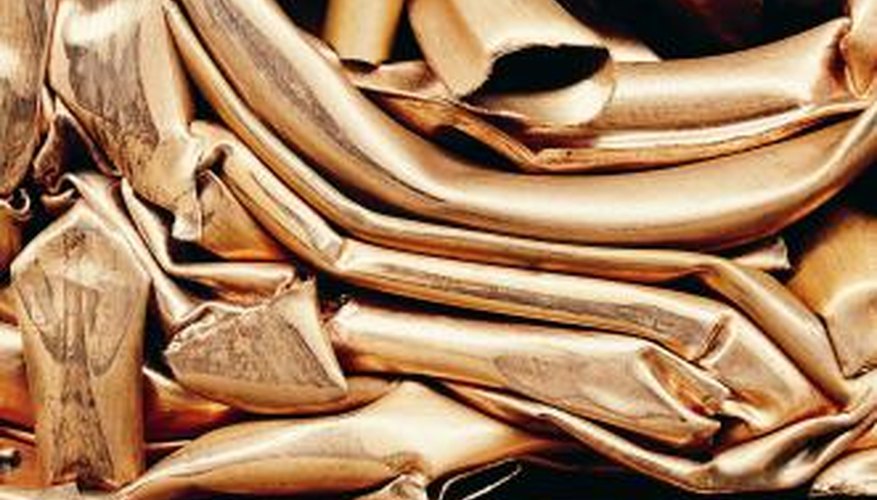Copper is considered a precious metal, most often utilised in electrical components because of its ability to conduct electricity safely and efficiently. Copper's importance in electrical components has increased its value in the marketplace and led to widespread recycling of the metal. Although recycling limits waste and dependency on copper mines, the task of recycling the metal has a few disadvantages.
Difficulty Separating Copper
Copper can be a difficult item to recycle because it needs to be purified of any of metals or contaminants to be used again in electrical components. Pure copper is essential the maintaining the conductivity of the metal. Most copper wiring is used for small electrical wiring and needs to be almost pure, without surface flaws, to prevent breaks during rod production. Recycled copper needs to be uncontaminated to ensure that it can be reused in new electronics. This is a major disadvantage for copper recycling; the process of separating the copper from old electrical components is difficult or not always possible.
- Copper can be a difficult item to recycle because it needs to be purified of any of metals or contaminants to be used again in electrical components.
- Most copper wiring is used for small electrical wiring and needs to be almost pure, without surface flaws, to prevent breaks during rod production.
Expensive
A disadvantage to recycling copper is that unless you have access to your own scrap metal, it can be expensive to buy it from other sources. According to School Science, scrap copper retains around 90 per cent of the cost of original copper, meaning it is almost as expensive to purchase scrap copper as it is new copper. Companies that are looking for sources of recyclable copper are still going to have to pay quite a bit of money for the scrap. This includes only the cost of purchasing the metal and does not include the cost associated with melting down and recycling the copper.
- A disadvantage to recycling copper is that unless you have access to your own scrap metal, it can be expensive to buy it from other sources.
Limited Sources
There are two primary areas that scrap metal is drawn from. One is "old scrap" from those who collect and resell old copper. The other is "new scrap," which is drawn from offcuts and scrapings from copper factories. The factories provide a reliable source of copper shavings and offcuts, which are predictably sold back to copper recyclers. The disadvantage comes with the public who provide an unreliable source of the used copper, which is often gathered from old buildings, old copper piping and disused electrical cables. It can be difficult to come across used copper products for recycling because this major source fluctuates regularly.
- There are two primary areas that scrap metal is drawn from.
- The disadvantage comes with the public who provide an unreliable source of the used copper, which is often gathered from old buildings, old copper piping and disused electrical cables.
